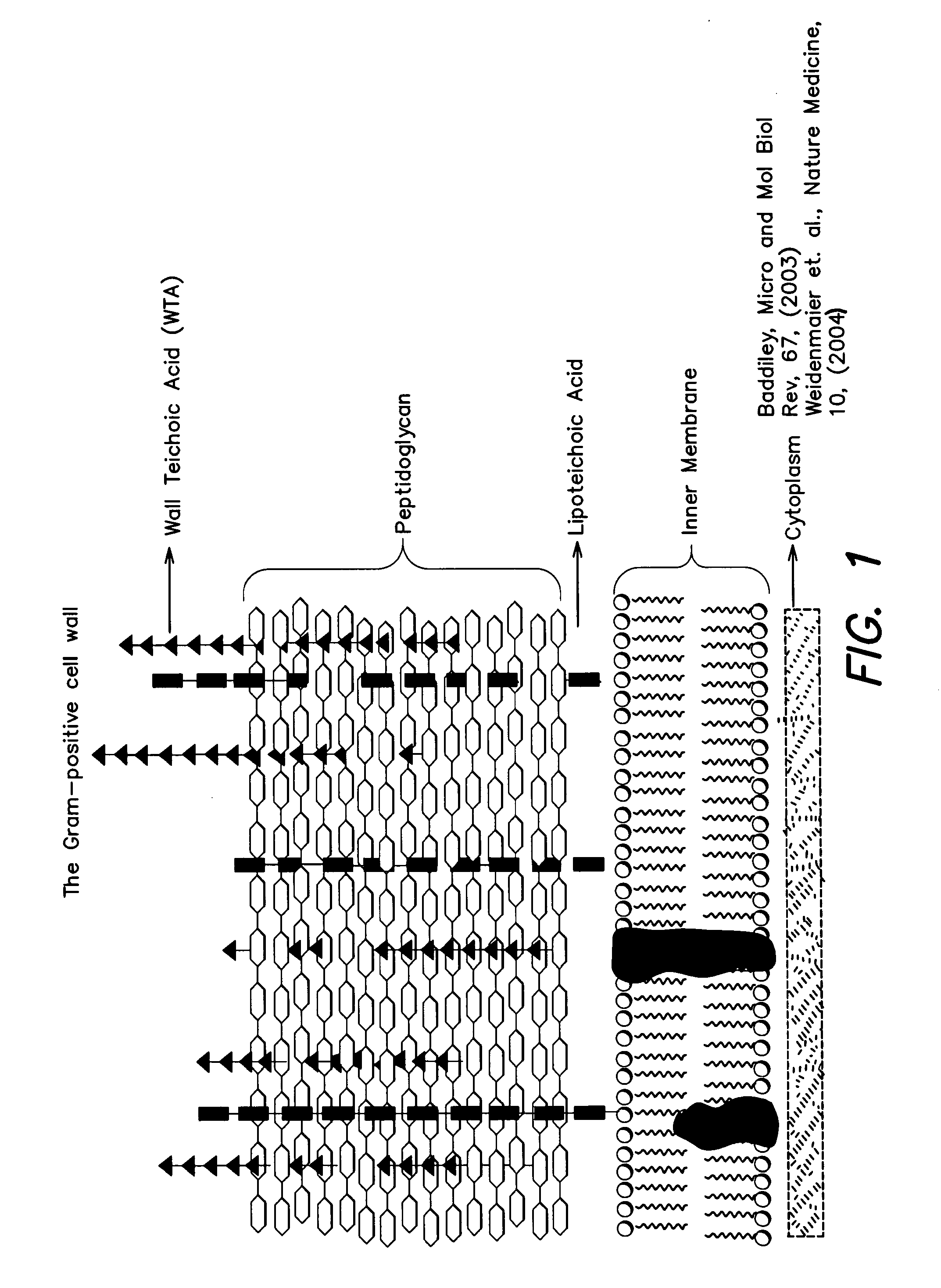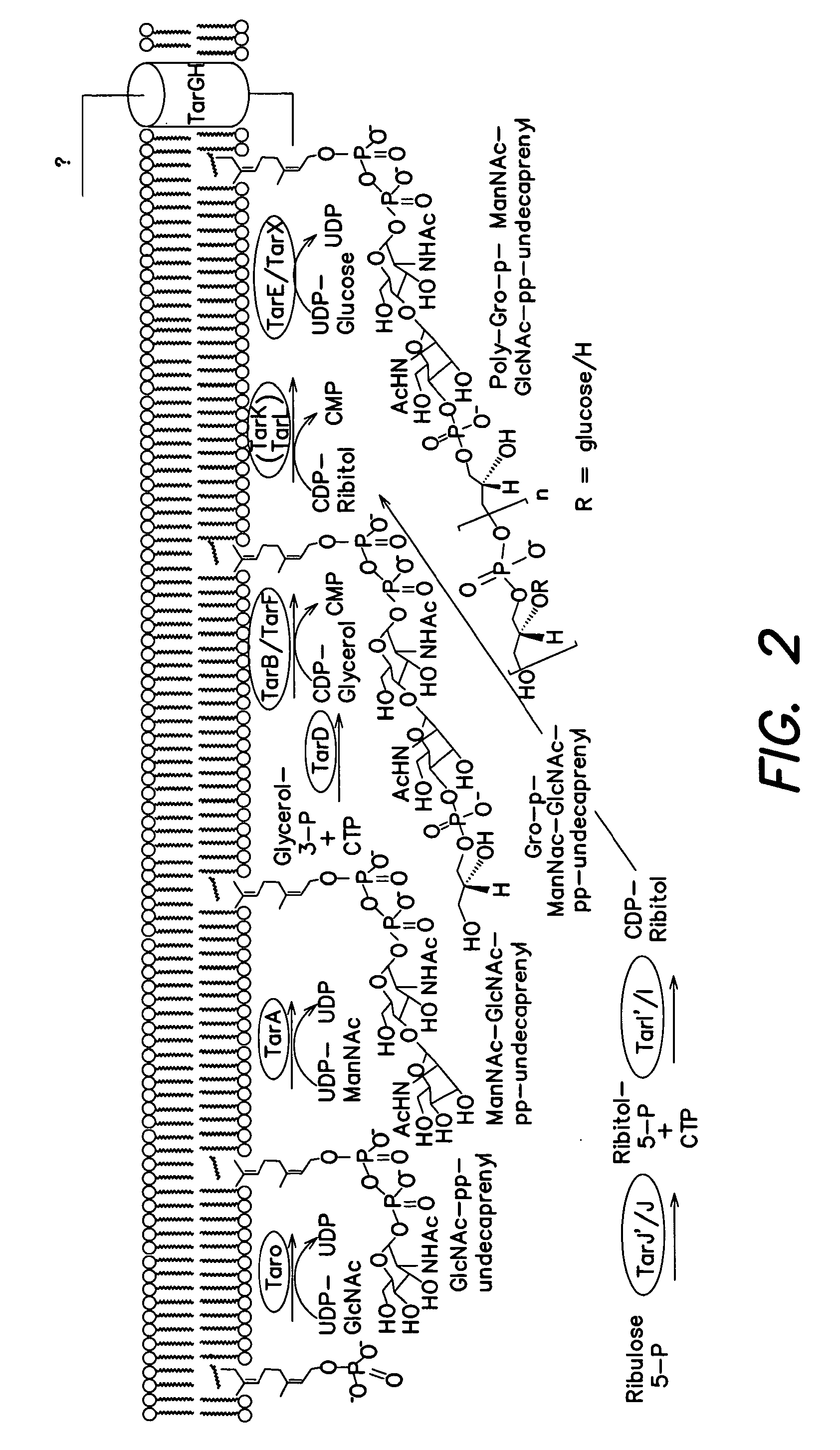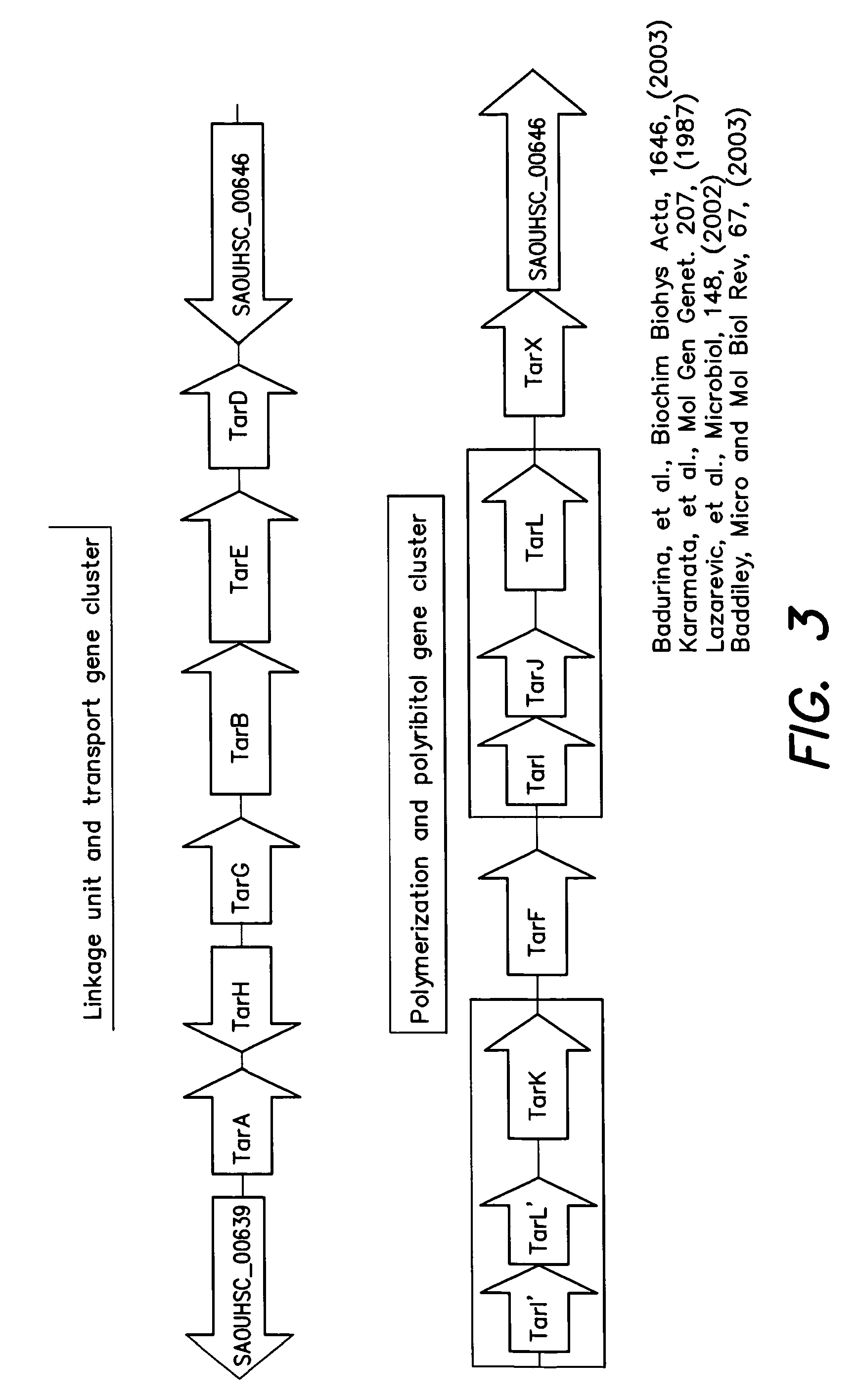Methods and compounds for antimicrobial intervention
a technology of antimicrobial and antibacterial agents, applied in the direction of antibacterial agents, drug compositions, biocides, etc., can solve the problems of almost 19,000 life-threatening infections and recurrence of a large number of infections, and achieve the effects of reducing the amount of wta biosynthesis, preventing or preventing the recurrence of infections, and reducing the level of wta biosynthesis
- Summary
- Abstract
- Description
- Claims
- Application Information
AI Technical Summary
Benefits of technology
Problems solved by technology
Method used
Image
Examples
example 1
N,N-Diethyl-7,8-dimethoxy-3-(phenylsulfonyl)-[1,2,3]triazolo[1,5-a]quinazolin-5-amine (4-22-7)
[0217]
Step 1. Synthesis of methyl 2-azido-4,5-dimethoxybenzoate
[0218]
[0219]A solution of sodium nitrite (486 mg, 7.1 mmol) in H2O (6 mL) was added to a solution of methyl 2-amino-4,5-dimethoxy benzoate (1.0 g, 4.7 mmol) in 6N—HCl (20 mL) at 0° C. under N2 atmosphere. After stirring for 15 min, the mixture was then added dropwise to a stirred solution of sodium azide (611 mg, 9.4 mmol) and sodium acetate (3.86 g, 47 mmol) in H2O (30 mL) at 0° C. under N2 atmosphere. After the addition was completed, the reaction mixture was warmed to room temperature and stirred for 2 hrs. The resulting precipitate was collected by vacuum filtration, wash with cold water and dried under reduced pressure to yield methyl 2-azido-4,5-dimethoxybenzoate (909 mg, 82%). 1H NMR (CDCl3, 600 MHz) δ 7.42 (s, 1H), 6.66 (s, 1H), 3.95 (s, 3H), 3.90 (s, 6H); MS (ES+) m / z 238.2 (M+H)+
Step 2. Synthesis of 7,8-dimethoxy-3-(ph...
example 2
N,N-Diethyl-3-(phenylsulfonyl)-8,9-dihydro-[1,4]dioxino[2.3-g][1,2,3]triazolo[1,5-a]quinazolin-5-amine (4-84-2)
[0225]
Step 1. Synthesis of methyl 2,3-dihydrobenzo[b][1,4]dioxine-6-carboxylate
[0226]A solution of 3,4-dihydroxybenzoic acid (5.0 g, 32 mmol) in methanol (80 mL) containing c-H2SO4 (3 mL) was heated at reflux for 4 hrs and cooled to room temperature. After concentrating under reduced pressure, the residue was dissolved in ethyl acetate and washed successively with water, saturated NaHCO3, and brine. The organic fraction was dried over MgSO4 and concentrated to give 3,4-dihydroxybenzoic acid methyl ester (5.2 g, 96%). 1H NMR (DMSO-d6, 600 MHz) δ 9.77 (s, 1H), 9.35 (s, 1H), 7.35 (s, 1H), 7.30 (d, 1H, J=7.8 Hz), 6.79 (d, 1H, J=7.8 Hz), 3.78 (s, 3H).
[0227]A mixture of 3,4-dihydroxybenzoic acid methyl ester (5.2 g, 31 mmol), 1,2-dibromoethane (2.9 mL, 34 mmol), and pulverized KOH (3.8 g, 68 mmol) in MeOH was heated at reflux for 30 hrs. After removal of the solvent under reduced...
PUM
| Property | Measurement | Unit |
|---|---|---|
| minimum inhibitory concentration | aaaaa | aaaaa |
| concentrations | aaaaa | aaaaa |
| pH | aaaaa | aaaaa |
Abstract
Description
Claims
Application Information
 Login to View More
Login to View More - R&D
- Intellectual Property
- Life Sciences
- Materials
- Tech Scout
- Unparalleled Data Quality
- Higher Quality Content
- 60% Fewer Hallucinations
Browse by: Latest US Patents, China's latest patents, Technical Efficacy Thesaurus, Application Domain, Technology Topic, Popular Technical Reports.
© 2025 PatSnap. All rights reserved.Legal|Privacy policy|Modern Slavery Act Transparency Statement|Sitemap|About US| Contact US: help@patsnap.com



